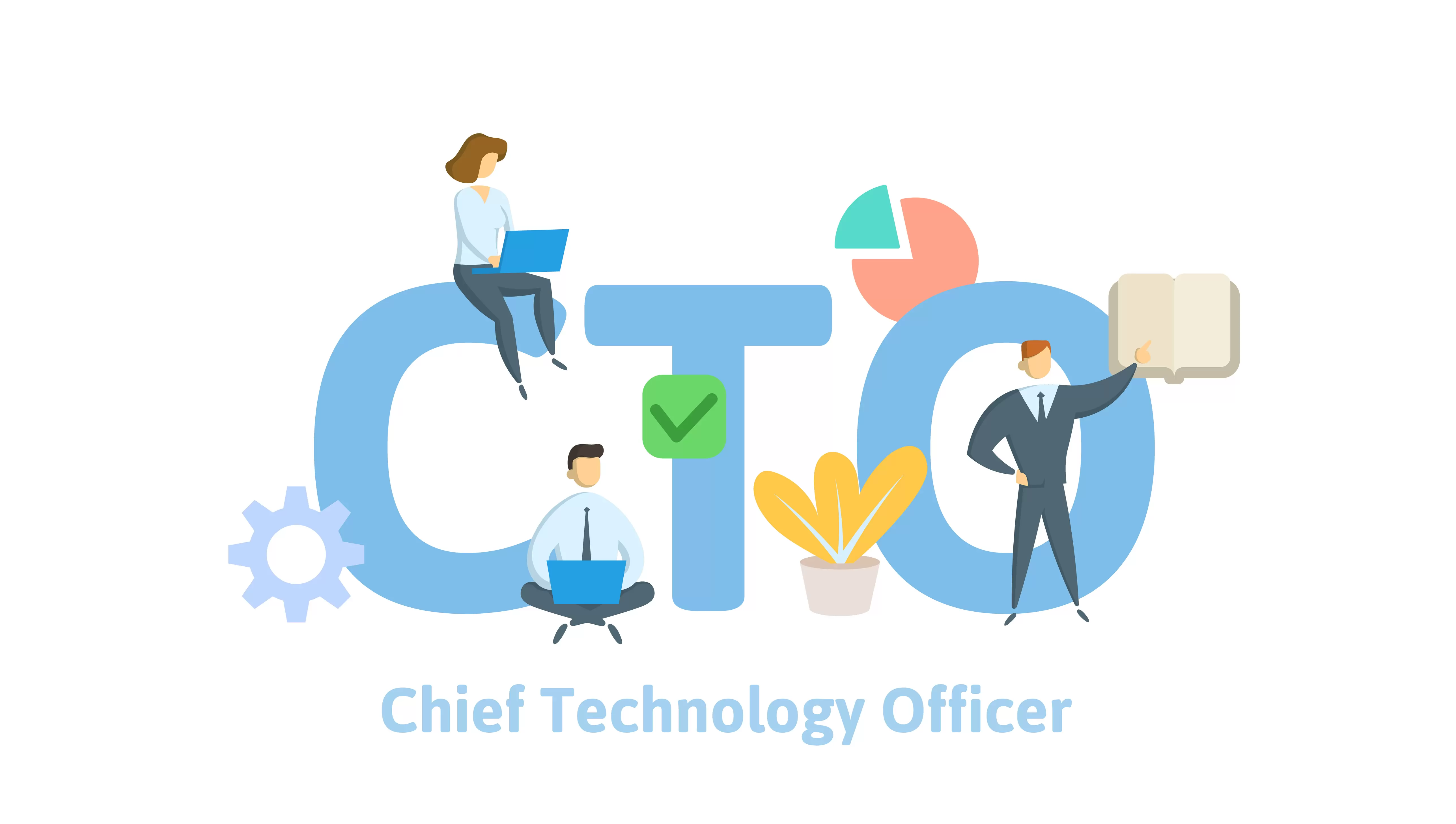Oselo Recruitment
How to Prepare for an Interview

Interviews can be very overwhelming, therefore we’ve put together some tips and tricks to help you prepare fully for your next interview.
Do your research
How thoroughly you prepare can determine how well you do in the interview. Although you may have all the qualifications and skills for the role you are interviewing for, knowledge about the company, culture and other employees is important.
- The Company: Learn more about their objectives, values, services, and most recent successes. Understand their market, rivals, and competitive landscape. With this information, you can customise your interview replies and show that you're genuinely interested.
- The Role: It’s a bit of a given you need to research the role you are applying for and have a full understanding of the requirements. However, it never hurts to do further research as you never know what you will find. Read the job description more than once, and if you filled out an application form, review it to remind yourself of how your talents and experience relate to the position. You must be able to communicate your career goals, demonstrate your knowledge of the position, and, most importantly, justify why you have applied.
- Who is Interviewing you: Although this isn’t a must it can be beneficial to have an understanding of what the person interviewing you does at the business. You can usually find the name of the person interviewing you on the email communications, where you will then be able to search for them on LinkedIn or on the company site.
Practise!
Before the actual interview, it's a good idea to do at least one practice interview. You can do this with someone you can trust to give you honest feedback, if you do not have anyone can you do this with, you can record yourself for self-assessment.
This will give you the chance to test out your internet connection too and make sure your laptop, microphone/any technical equipment you need to work.
Prepare questions to ask
To be able to demonstrate proactiveness, it is worth having questions to ask in the interview in mind. This could surround the company culture, your day-to-day, or any initiatives you’re interested in.
This shows that you are interested in the position and helps in trying to learn more about the organisation and the role.
Prepare all Necessary Documents.
Organise all the required paperwork, including a copy of your CV, cover letter, reference letters, and any essential licences or portfolio examples.
By keeping them in an easy-access folder on your computer to send over, or having them in a folder printed, will keep you organised.
What to wear
What to wear can be very dependent on the company/industry you are interviewing for. In the past, it was an expectation to always dress smartly and professionally when at work, however, more casual office attire has become more popular.
There are certain factors which can indicate the level of formality of the company, such as the terms of communication and the language they use, photos used on their website and social media pages, the job role you are applying for and the industry it is in.
For example, if you are applying for a big law firm, you will be expected to dress smart, however, a small technology company may be a little more casual.
If you are ever unsure, you can always ask the person you are in communication with what the dress code and the company is.
Plan the day
To avoid any unnecessary stress, ensure you have double checked the time and date of the interview, the location, or platform if it is online.
If the interview is online, beforehand you should make sure your surroundings are quiet and your background is professional.
If the interview is face-to-face, ensure you have checked the route you need to take to get to the location on time and its whereabouts.
After the interview
Ending an interview can sometimes feel awkward, however, the best way to leave is by leaving with a good impression. This can be done by simply thanking the interviewer for their time and you hope to hear from them soon.
It’s always worth making notes of the questions you were asked in the interview and keeping them safe to help you prepare for any future interviews.
In the case that you are unsuccessful, it is always worth emailing and asking for feedback so you can take it on board and use that for the future.

Recently, the study of artificial intelligence (AI) has risen in significance as ground-breaking developments have had an immense effect on companies and society all over the world.
A number of research institutions and laboratories are working tirelessly to push the limits of what is possible as the demand for cutting-edge AI solutions continues to grow.
1. DeepMind: An innovative research and development in AI DeepMind, a well-known AI research facility with headquarters in London, United Kingdom, is at the top of the list. DeepMind has significantly advanced the field with its ground-breaking innovations in deep learning, reinforcement learning, and machine learning. Their innovations include AlphaGo, an AI system that defeated top-tier Go players, and AlphaFold, which changed the prediction of protein structure. DeepMind has become a recognised leader in AI research because of their dedication to advancing the subject..
2. OpenAI: A research group with a focus on creating and advancing ethical AI. Natural language processing, computer vision, and reinforcement learning have all seen significant advancements thanks to OpenAI. With their transformational language model GPT-3, OpenAI has shown that AI has the ability to produce writing that mimics a human (to some extent), and can assist with a variety of different queries. The commitment of OpenAI to guarantee that the advantages of AI are available to everyone while minimising possible concerns has established them as a crucial figure in determining the direction of AI.
3. Fair AI: Advancing Ethical and Responsible AI Development Fair AI, a collaboration between Google Research and Google's People + AI Research initiative, is a leading lab dedicated to advancing ethical and responsible AI development. Their research focuses on addressing bias, fairness, transparency, and accountability in AI systems. By emphasising the social and ethical implications of AI, Fair AI strives to create a more inclusive and equitable technological landscape. Their interdisciplinary approach has garnered significant recognition and has influenced AI research practices across the globe.
4. Google Brain: AI Innovation for Practical Impact A unit at Google called Google Brain has continuously advanced AI, making advances in fields including computer vision, natural language processing, and robotics. A notable accomplishment of their work is the creation of the open-source machine learning framework TensorFlow. Google Brain's dedication to using AI to solve real-world issues and encouraging collaborations among researchers has cemented its place among the world's leading AI laboratories.
5. Microsoft Research: Microsoft Research, has played a key role in advancing AI technology and applications. Their contributions cover a wide range of topics, including data mining, computer vision, and speech recognition. Microsoft Research has also actively explored interdisciplinary research, working with experts from several sectors to address challenging problems. They have made significant contributions to the development of AI through their commitment to innovation and wide-scale deployment of the technology.
The top AI labs worldwide, as identified by researchers from DeepMind, OpenAI, and Fair AI, demonstrate the immense impact and potential of AI research and development. These institutions have consistently pushed the boundaries of what is possible, revolutionising industries and transforming societies. DeepMind, OpenAI, Fair AI, Google Brain, and Microsoft Research have all established themselves as pioneers in the field, addressing key challenges while ensuring ethical and responsible AI development. As we look to the future, it is clear that these labs, along with other dedicated organizations, will continue to shape.

Pride Month is a time of celebration and a reminder of the importance of having inclusivity and acceptance in all areas of life. It is critical to establish an environment in the workplace that values diversity and encourages individuals to be themselves at work. Companies may not only attract and keep top personnel by promoting an inclusive workplace, but also build a culture of creativity, collaboration, and success. However, promoting an inclusive workplace is one thing, actually having one is different.
Continue reading to find out what steps you can take to make your workplace more inclusive!
Promote Awareness and Education:
To build an inclusive workplace, it is essential to promote awareness and education about LGBTQ+ issues and history. Organise workshops, training sessions, or guest speaker events to educate employees about the challenges faced by the LGBTQ+ community and the importance of creating a safe space for everyone. Encourage open dialogue, ask questions, and provide resources that foster understanding and empathy.
Implement Inclusive Benefits and Policies:
Review your company policies to ensure they are inclusive and supportive of LGBTQ+ employees. Consider implementing policies that prohibit discrimination based on sexual orientation or gender identity and provide clear guidelines for reporting any instances of discrimination or harassment. Additionally, you could offer inclusive benefits, such as healthcare coverage for same-sex partners, parental leave policies that encompass all types of families, and gender-neutral restroom facilities.
Encourage Employee Resource Groups:
Establish affinity or employee resource groups (ERGs) to serve the needs and interests of LGBTQ+ employees. These organisations can provide forums for advocating, networking, and support. Encourage membership in these groups and provide them with the tools and assistance they need to affect good change inside the organisation.
Promote Inclusive Language and Communication:
Language is essential in promoting inclusion. Promote the use of inclusive language in all communications with internal and external communications. Encourage staff to use their chosen pronouns and refrain from making assumptions about people's gender or sexual orientation. To ensure that all employees feel respected and valued, provide standards for using inclusive language.
Celebrate Diversity and Pride:
Pride Month is a fantastic chance to highlight diversity within your company. Plan celebrations and other events that honour the LGBTQ+ community and demonstrate your dedication to inclusiveness. To promote LGBTQ+ issues, consider hosting panel discussions, movie screenings, or volunteer events. Participate in Pride Month events with your staff to promote a feeling of community and celebration.
Support External LGBTQ+ Initiatives:
Engage in external LGBTQ+ activities to extend your support outside of the workplace. If you want to have a good influence on the community, consider supporting LGBTQ+ organisations, sponsoring local Pride parades, or providing volunteer opportunities for staff. By actively taking part in outside projects, you can demonstrate your support for the greater LGBTQ+ community and promote an inclusive culture outside of the four walls of the workplace.
An inclusive workplace must be continuously developed, which calls for understanding, and action. Embracing diversity is a chance to honour the LGBTQ+ community and reaffirm your commitment to inclusiveness, especially during Pride Month. By putting the suggestions discussed into practise, your company can create an environment where all workers can thrive, bring their complete selves to work, and contribute to a more creative and peaceful workplace. Let inclusion be a year-round commitment that improves your workplace culture and let Pride Month serve as an opportunity for positive change.
Understanding the Metaverse

What is the metaverse?
The metaverse is a hypothesized iteration of the internet as a single, universal and immersive virtual world that is facilitated by the use of virtual reality (VR) and augmented reality (AR) headsets. In simple terms, it is a virtual world where people can interact with each other and with digital content in a way that is more immersive and realistic than ever before.
Although the metaverse is still in its early stages of being developed, it has the potential to revolutionize the way we interact with the internet. In the metaverse, we could work, play, shop, and socialize in a completely immersive environment. We could also use the metaverse to learn new things, explore new places, and connect with people from all over the world.
How does the metaverse work?
The metaverse is made up of a number of different technologies, including VR, AR, and blockchain. VR headsets allow users to immerse themselves in a virtual world, while AR headsets overlay digital content onto the real world. Blockchain is used to create a secure and transparent way to store and track digital assets.
These technologies are combined to create a virtual world that is both immersive and interactive. Users can move around the metaverse, interact with each other and with digital content, and even create their own content.
What are the benefits of the metaverse?
The metaverse has the potential to offer a number of benefits, including:
Increased social interaction: The metaverse can make it easier for people to connect with each other, regardless of their physical location. This could be especially beneficial for people who are isolated or have difficulty socializing in the real world.
Improved communication: The metaverse can make it easier for people to communicate with each other in a more natural way. This could be especially beneficial for people who are deaf or hard of hearing.
Enhanced learning: The metaverse can be used to create immersive and interactive learning experiences. This could make it easier for people to learn new things and retain information.
Increased productivity: The metaverse can be used to create virtual workspaces where people can collaborate on projects and share information. This could lead to increased productivity and innovation.
New forms of entertainment: The metaverse can be used to create new forms of entertainment that are more immersive and interactive than anything that is currently available. This could lead to a more engaging and enjoyable experience for users.
What are the challenges of the metaverse?
The metaverse is still in its early stages of development, so there are a number of challenges that need to be addressed before it can become mainstream. These challenges include:
Cost: The cost of VR and AR headsets is still relatively high, which could limit the adoption of the metaverse.
Technology: The technology behind the metaverse is still evolving, so there are a number of technical challenges that need to be addressed.
Security: The metaverse is a new and untested platform, so there are a number of security concerns that need to be addressed.
Regulation: The metaverse is a new and evolving platform, so it is not yet clear how it will be regulated. This could lead to uncertainty and confusion for businesses and users.
The metaverse is a new and exciting technology with the potential to revolutionize the way we live, work, and play. However, there are a number of challenges that need to be addressed before it can become mainstream. Despite these challenges, the metaverse is a promising technology with the potential to change the world.

What does being Neurodivergent mean?
Neurodivergent is a term used to describe people whose neurological development and functioning differs from what is considered typical or "normal" by society. This includes conditions such as autism, ADHD, dyslexia, Tourette's syndrome, and others.
Being neurodivergent means that a person's brain functions, processes information, and communicates differently from the majority of people. This can result in a variety of strengths and challenges, as well as unique perspectives and experiences.
It is thought that about 15–20% of the population is neurodiverse. This includes up to 10% of people who are diagnosed with dyslexia, 6% with dyspraxia, 5% with ADHD and 1–2% with autism.
It's important to understand that having a neurodivergent personality is not a disadvantage or a bad quality. People who are neurodivergent can bring distinctive viewpoints and talents to the job, such as extraordinary attention to detail, outside the box thinking, and creative problem-solving skills.
The standard recruiting process may be a difficult and intimidating experience for many Neurodivergent people. For instance, it can be challenging to handle the flood of social cues and unstated expectations that frequently go with job interviews. As a result, despite having the talents and certifications required for success, many neurodivergent people are often overlooked or shut out of work opportunities. However, companies can help create a more welcoming and accepting environment for Neurodivergent people by making a few straightforward changes to the hiring process.
When posting a job:
Often, neurodivergent individuals may have difficulty understanding certain types of language or idioms. Therefore, when posting a job, it's important to use language that is clear, concise, and free of jargon or slang.
Start by taking a close look at them and making sure that the wording you choose to describe the skills and qualities needed for the position is straightforward and unambiguous. Avoid using terms that are confusing or disguised since it might mislead or put off applicants who are Neurodivergent.
Use different interview formats
Traditional interviews often focus heavily on social skills and small talk, which can be difficult for Neurodivergent individuals. You should consider using alternative interview formats, such as written or video interviews, that allow candidates to showcase their skills without being judged on their social skills or body language.
Companies may choose to use other interview forms that are more accessible to neurodivergent people in addition to textual or video interviews. For instance, some businesses have employed simulations or skills-based tests that let applicants show off their capabilities in a more real-world setting. Assessments of this nature might be particularly helpful for positions requiring specialised technical or analytical abilities.
Provide clear instructions
It's important to realise that neurodivergent people may struggle with executive function abilities including planning, time management, and task initiation. Without straightforward directions, these difficulties may make it difficult for individuals to perform pre-interview tests or assignments. Neurodivergent individuals often thrive in structured environments, so providing clear guidelines and expectations can help to reduce anxiety and allow them to focus on their strengths.
Be flexible
Neurodivergent individuals may have different sensory needs and may become overwhelmed by stimuli in their environment. For example, someone with autism may be sensitive to loud noises or bright lights, while someone with ADHD may have difficulty sitting still for long periods of time.
Companies may adapt the interview process to meet these demands in a couple of ways:
- Creating a calm and peaceful setting for the interview
- Allowing the use of sensory devices like noise-cancelling headphones or fidget toys
- Allowing candidates to wander around or take sensory breaks during breaks in the interview process
- Flexible schedule to meet the demands of the candidate
It's key to keep in mind that these modifications should be done individually and after discussing with the applicant. Also, companies should make sure that any modifications they make are fair and do not significantly change the job's requirements.
Provide feedback
After the interview process, giving candidates feedback after an interview can be very helpful for Neurodivergent people. Receiving feedback will assist them to recognise what they did well and where they need to improve because they may find it difficult to interpret the social signs and expectations in an interview. It might increase their self-assurance for future interviews and demonstrate the company's commitment to creating a welcoming atmosphere for all applicants. Feedback that gets delivered in a supportive and constructive way, pointing out areas for development while also praising their qualities. This might help the candidate to have good experience and feel more involved with the business.
By making these simple adjustments, companies can create a more inclusive and supportive environment for Neurodivergent individuals. Not only does this help to promote diversity and inclusion, but it also allows companies to tap into a highly skilled and often overlooked talent pool.
The Benefits of a CTO

The Benefits of a CTO
Technology is essential to the success of any organisation in the modern digital environment. Having a Chief Technology Officer (CTO) is becoming more and more crucial for businesses of all sizes as technology continues to advance.
What is a CTO?
A CTO is in charge of directing a company's technological strategy and execution. This involves overseeing the creation and introduction of new technologies as well as the upkeep and improvement of current ones. The CTO is also in charge of making sure that the business goals and the company's technological strategy are compatible.
Why is having a CTO important?
Strategic Planning
The creation and implementation of a technology strategy that is in line with the company's overarching business objectives is one of the key duties of a CTO. This entails finding and applying fresh technological solutions that can advance the business and keep it one step ahead of rivals. You can make sure that your business is utilising technology as effectively as possible by putting a CTO in place.
Innovation
In the busy business environment of today, innovation is essential. By investigating and applying new technology, a CTO can keep your business creative and help you stay one step ahead of the competition. You may continue to develop and flourish in your industry by staying ahead of the curve and being relevant.
Cost-Effective Solutions
A CTO may save your business money by locating affordable solutions to your IT requirements. They can assist you in finding areas where you may save expenses without compromising performance or quality. Long-term cost savings and increased profitability are both possible thanks to this for your business.
Technology Expertise
A CTO has the technical proficiency and understanding required to guarantee the efficient operation of your company's technological systems. They can resolve issues, pinpoint opportunities for development, and make sure your technology is safe and up to date. This can help your business avoid expensive downtime and guarantee that your systems are operating at their best.
Leadership
A CTO is also in charge of managing a group of IT specialists. They may offer direction and encouragement to make sure your team is operating successfully and efficiently. With improved outcomes for your business, this may keep your workforce inspired and productive.
In the modern digital environment, having a CTO is becoming more and more important. You can make sure that your business is utilising technology as efficiently as possible, remaining one step ahead of the competition, saving money, ensuring optimal performance, and inspiring your staff to succeed by putting a CTO in place.
MishiPay Podcast
Episode Two!
The latest episode of The Oselo Podcast is out now, featuring two special guests from MishiPay.
Join us as Courtney catches up with MishiPay's Founder & CEO Mustafa Khanwala, and CPO Theodore N. Sotiriou, about the future of retail, the challenges of scaling a startup, and how they're using technology to create a frictionless shopping experience for everyone!
Trust me, you don't want to miss this one! Listen Now
7 Tips for Staying Focused and Efficient at Work

Being productive is essential for success and staying ahead in the fast-paced workplace of today. It's easy to feel overloaded and lose concentration when there are so many distractions and multiple tasks to be completed. However, you can manage productivity and reach the goals you set for yourself if you set the correct methods.
Set Clear Goals and Priorities
Setting clear priorities and goals is the first step to increasing productivity. Set your goals for the day and prioritise tasks according to significance and completion dates. Make a to-do list and divide more challenging tasks into more manageable chunks. Knowing what has to be done when and how can help you stay organised and focused.
Manage Your Time Wisely
For productivity, time management is essential. Make the most of your day by designating timeslots for different tasks. Avoid multitasking since it might make you less productive and more likely to make mistakes. Instead, give one task at a time your whole attention and schedule uninterrupted time for it. Utilise time management applications, calendars, and other productivity tools to help you keep organised and productive.
Minimize Distractions
The greatest threat to productivity is distraction. Take choices to reduce the distractions you experience the most by identifying them. If email notifications, for instance, frequently interfere with your work, disable notifications or designate specified times to check your inbox. Block or restrict access to social networking websites if they are a distraction during working hours. To help with concentration and reduce distractions, set up a calm and orderly workstation.
Take Regular Breaks
It may seem counterintuitive to productivity to take regular breaks, but doing so is essential for maintaining focus and energy. According to studies, taking little breaks throughout the day could increase creativity and productivity. Make use of your breaks to relax, stretch, or do something unrelated to your job. You may come back to your job with a new perspective and more energy by taking a little break.
Prioritise Self-Care
Your productivity depends on how you are feeling. Prioritise your own well-being and keep a good work-life balance. Get enough rest, eat well, move around frequently, and handle stress. Being physically and psychologically well will help you stay energised, focused, and resilient, which will ultimately lead to greater productivity.
Delegate and Collaborate
Don't be worried about collaborating with coworkers or giving tasks. If your workload is too much for you to handle, think about delegating some of the work or forming a team to share the stress. By utilising the capabilities of each team member, delegation and collaboration will not only reduce your workload but also build cooperation and increase production.
Learn and Improve
Continuous learning and improvement are essential for staying productive at work. Stay updated with the latest tools, techniques, and best practices in your field. Seek feedback from your colleagues or supervisor to identify areas of improvement. Reflect on your performance regularly and make adjustments as needed. Embrace a growth mindset and strive for continuous improvement to enhance your productivity over time.

Continuous learning and development have become essential for professionals in all industries in today's dynamic and competitive workplace.
Maintaining relevance and adaptability in the workforce involves a continuous need for learning and development, especially due to the rapid advancement of technology, changing job positions, and shifting corporate environments. There are numerous benefits to why investing in your learning and development is beneficial.
Keep Skills Updated
Job responsibilities are continually changing in today's fast-paced world as a result of innovations in technology, market shifts, and industry trends. What is significant today could not be so tomorrow. Professionals can keep their skills relevant and make sure they stay current in their field by investing in ongoing learning and development. Continuous learning puts professionals ahead of the curve and improves their employability, whether it's picking up new software, gaining credentials unique to their sector, or developing their leadership abilities.
Boosts Career Growth
The advancement of a person's career involves growing and developing processes. It supports individuals in learning new information, gaining new talents, and expanding their skill sets so they can take on more responsibility and grow in their position. Employees that are involved in learning and development programmes show their commitment to personal and professional development, which may lead to new possibilities, promotions, and pay rises.
Enhances Job Satisfaction
Job happiness may be strongly impacted by learning and growth. Employees are more engaged, driven, and fulfilled when they have an opportunity to learn to grow in their jobs. They have a feeling of purpose since they are developing and growing professionally. Organisations that place a high priority on learning and development foster a supportive and respected work environment, which boosts employee retention and job satisfaction.
Increases Creativity and Innovation
Innovation and creativity can be encouraged at work through learning and growth. Employees are more likely to develop creative responses and approaches to problems facing the company when they are encouraged to explore new ideas. Employees may learn how to think critically, solve issues, and react to changing circumstances—all of which are crucial abilities for creativity. Companies that encourage learning and growth are more likely to be competitive and creative within their sectors.
Supports Organizational Success
Learning and development are advantageous for companies as well as for workers. Employees become more productive, efficient, and effective in their jobs when they continually learn new things and advance their skills. They contribute new insights, concepts, and methods to their job, which can enhance efficiency and effectiveness. Also, companies that support their workers' learning and development show a dedication to their success and well-being, which boosts employee loyalty and retention.
Promotes Adaptability and Resilience
Adaptability and resilience are essential traits in today's corporate world, which is changing quickly. Employees can gain these skills through learning and development by being open to new concepts, taking lessons and learning from past mistakes. Employees become more resilient in the face of challenges and companies become more agile and adaptive to changing demands from the market as a result of their ability to gain new abilities.
To summerise, professionals in all fields of work must always develop their skills. It keeps people current, advances their professional development, raises work happiness, encourages creativity, supports organisational success, and encourages resilience and adaptation. Continuous learning and development have become crucial for both personal and professional success as job market continues to change. In order to succeed in the competitive job market of today, both companies and individuals alike need prioritise and invest in learning and development. Keep in mind that learning and growth may open up countless opportunities for success in any line of work.
Women In STEM
 Men have historically dominated STEM (Science, Technology, Engineering, and Mathematics) fields. However, over the past few decades, women have made significant strides in STEM, breaking barriers, and paving the way for future generations of women to excel in these fields.
Men have historically dominated STEM (Science, Technology, Engineering, and Mathematics) fields. However, over the past few decades, women have made significant strides in STEM, breaking barriers, and paving the way for future generations of women to excel in these fields.
According to WISE, as of the end of June 2022, the most recent government workforce statistics continue to demonstrate a rise in the proportion of women working in Core-STEM fields. Its number increased from 26.6% in December 2021 to 26.9% 2022.
Importance of Women in STEM
For a number of reasons, women need to be represented in STEM fields. Women bring different opinions and thoughts to the table that may inspire creative solutions to challenging issues.
A team that is diverse in terms of gender, colour, and background encourages innovation and encourages better decision-making. Young girls might be inspired to pursue jobs in STEM subjects by women who work in these industries as role models.
There are various key contributing factors to why there is gap in Women in STEM:
Gender Stereotypes: Teachers and parents sometimes undervalue girls' arithmetic skills beginning in preschool since STEM fields are typically seen as being masculine.
Male-Dominated Cultures: Since fewer women pursue STEM degrees and careers, these professions frequently maintain restrictive, and male-dominated cultures that are neither welcoming to or appealing to women and minorities.
Fewer Role Models: Because of the lack of female role models in books, media, and popular culture, girls are less likely to be inspired to pursue careers in science and engineering. Even fewer Black women serve as role models in the sciences and maths.
Math Anxiety: Lecturers, who are typically female, usually show mathematical anxiety that they pass on to the students. As a result, they often give girls lower grades for the identical assignments and presume that girls must study more to catch up to boys in math ability.
Challenges faced by Women in STEM
Despite the progress made by women in STEM, they still face significant challenges. One of the most significant challenges is the lack of representation. Women are still underrepresented in STEM fields, with only 24% of STEM jobs held by women in the United States. This lack of representation can lead to feelings of isolation and make it challenging to find mentors and allies.
Another challenge is the unconscious bias that women face. Research has shown that people often hold unconscious biases that can affect their perceptions and decisions regarding women in STEM fields. These biases can lead to women being overlooked for opportunities and promotions.
Finally, women in STEM fields often face a work-life balance challenge. STEM fields often require long hours and inflexible schedules, which can be difficult for women who want to balance their careers with their personal lives.
Initiatives to encourage women in STEM
To address the challenges faced by women in STEM, several initiatives have been taken to encourage more women to pursue careers in these fields. One of the most significant initiatives is the creation of mentorship programs that pair women with successful women in their fields. These programs provide guidance, support, and advice, helping women overcome the challenges they face.
Another initiative is the promotion of STEM education among girls from an early age. Programs such as Girls Who Code and the National Girls Collaborative Project encourage girls to develop an interest in STEM fields through workshops, camps, and other activities.
Conclusion
Women in STEM fields have made significant progress over the past few decades, but there is still a long way to go. It is essential to continue promoting diversity and inclusivity in STEM fields to create a workforce that is representative of society as a whole. By addressing the challenges faced by women in STEM fields and providing support and encouragement, we can inspire the next generation of women to excel in these fields and continue breaking down barriers.












